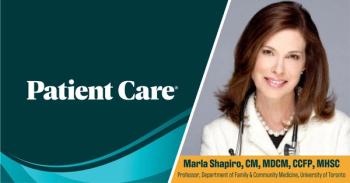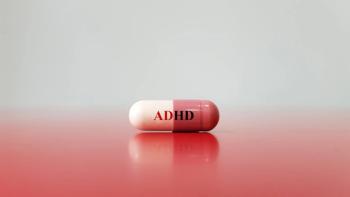
Genital Herpes and HPV Infection: Latest Treatment Guidelines From the CDC
Recently the CDC updated its guidelines for treating sexually transmitted diseases (STDs). This article focuses on genital herpes simplex virus (HSV) infection and human papillomavirus (HPV) infection.
Recently the CDC updated its guidelines for treating sexually transmitted diseases (STDs).1 In last month's issue (CONSULTANT, June 2002, page 849), the recommendations for managing sexually transmitted bacterial diseases were discussed. Here the focus is on genital herpes simplex virus (HSV) infection and human papillomavirus (HPV) infection. In a future issue,
Highlights of the new guidelines for treating viral STDs, which are provided below, include:
• Renewed emphasis on counseling for patients with genital herpes and those with HPV infection.
• Improved type-specific serologic tests for HSV.
• Updated dosing recommendations and alternative regimens.
• Tips for follow-up.
GENITAL HERPES
At least 50 million Americans have genital HSV infection. This recurrent, incurable disease remains undiagnosed in most infected persons; they often have mild or asymptomatic infections and shed virus intermittently in the genital tract. Although systemic antiviral drugs can partially control the signs and symptoms of herpes, they do not eradicate latent virus and have no effect on recurrence after therapy is discontinued.
Diagnosis. The clinical diagnosis of genital herpes is both insensitive and nonspecific. Many infected persons do not have the typical painful multiple vesicular or ulcerative lesions (Figure 1). Thus, laboratory testing is necessary to confirm the diagnosis and to determine the HSV serotype. Two HSV serotypes have been identified: HSV-1 and HSV-2. Although HSV-1 causes up to 30% of the first episodes of genital herpes, recurrences are much less common with HSV-1 infection than with HSV-2 infection.
Virologic tests. Isolation of HSV in cell culture is the preferred virologic test in patients who have genital ulcers or other mucocutaneous lesions. The sensitivity of culture declines rapidly as lesions begin to heal, usually within a few days of onset. Polymerase chain reaction assay for HSV DNA is the test of choice for detecting HSV in the spinal fluid of patients with suspected CNS involvement.
Type-specific serologic tests. Because false-negative HSV cultures are common, especially in patients with recurrent infection or healing lesions, these tests are useful in confirming a clinical diagnosis of genital herpes. They can also be used to diagnose asymptomatic infection and to test sex partners of infected patients. Routine screening for HSV infection in the general population, however, is not recommended.
Both type-specific and nonspecific antibodies to HSV develop during the first several weeks following infection and persist indefinitely. Accurate type-specific assays for HSV antibodies must be based on the HSV-specific glycoprotein G2 for the diagnosis of HSV-2 infection and glycoprotein G1 for HSV-1 infection. These assays became available in 1999; older assays do not accurately distinguish HSV-1 from HSV-2 antibody. Specifically request a type-specific gG-based assay when ordering serologic testing.
The sensitivities of these tests for detection of HSV-2 antibody vary from 80% to 98%, and false-negative results may occur, especially in the early stages of infection. The specificities of these assays are at least 96%. False-positives can occur, especially in patients with a low likelihood of HSV infection, and a second test may be required.
Primary infection. Management of the first clinical episode of genital herpes includes systemic antiviral medication (acyclovir, famciclovir, or valacyclovir) and counseling. Recommended regimens are listed in Table 1. Topical antiviral therapy, which provides only minimal benefit, is not recommended.
or
1 g/d for 5 d
Counseling is an important aspect of management, not only at the initial visit but also at follow-up visits, after the acute illness subsides. When talking to patients about genital herpes, be sure to:
• Discuss the benefits of episodic and suppressive antiviral therapy with patients who are having a first episode of genital herpes.
• Emphasize the potential for recurrence, asymptomatic viral shedding, and sexual transmission when you describe the natural history of the disease.
• Advise patients to abstain from sexual activity when lesions or prodromal symptoms are present. Encourage them to tell their partners that they have genital herpes.
• Advocate the use of latex condoms during all sexual exposures with new or uninfected partners.
• Counsel patients that sexual transmission of HSV can occur during asymptomatic periods. Asymptomatic viral shedding occurs more frequently in patients who have HSV-2 infection and in those who have had genital herpes for less than 12 months.
• Explain the risk of neonatal transmission to all patients, including men. Tell women who are of childbearing age to inform all their health care providers of the HSV infection if they become pregnant.
• Advise the sex partners of patients with genital herpes that they might be infected even if they have no symptoms. Offer type-specific serologic testing to the partner.
• Provide the same counseling to patients with asymptomatic HSV-2 infection detected by serologic testing that those who have symptomatic infection receive. Antiviral therapy is not recommended for persons who have no clinical manifestations of infection.
Recurrent infection. Most patients who have a first episode of genital HSV-2 infection will have recurrences. Episodic antiviral therapy can ameliorate or shorten the duration of the lesions; suppressive therapy can reduce the frequency of recurrences.
Episodic therapy can benefit many patients who have recurrent disease when treatment is started during the prodrome or within 1 day after the onset of lesions. Provide the patient with antiviral therapy or a prescription for the medication so that treatment can be initiated during this window of opportunity.
Daily suppressive therapy reduces the frequency of recurrences by at least 70% among patients who have 6 or more recurrent episodes per year. Daily acyclovir therapy has been shown to be safe and effective for up to 6 years; daily therapy with valacyclovir or famciclovir, for 1 year.
After 1 year of continuous suppressive therapy, discuss terminating treatment with the patient. In many patients, the frequency of recurrences decreases over time.
Suppressive antiviral therapy reduces but does not eliminate asymptomatic viral shedding. Thus, the extent to which such therapy may prevent HSV transmission is unknown.
Both valacyclovir and famciclovir are comparable to acyclovir in terms of clinical outcome.2-6 Valacyclovir, 500 mg/d, may be less effective than other valacyclovir or acyclovir regimens in patients with numerous recurrences (10 or more episodes per year). Consider cost and ease of administration when selecting an agent for long-term antiviral therapy.
Severe disease. Intravenous antiviral therapy is required for patients who have severe HSV infection or complications that mandate hospitalization, such as disseminated infection, pneumonitis, hepatitis, or CNS complications (eg, meningitis or encephalitis). The recommended regimen is IV acyclovir, 5 to 10 mg/kg q8h for 2 to 7 days or until symptoms are resolved. This is followed by oral antiviral therapy to complete a total of 10 days of treatment.
HUMAN PAPILLOMAVIRUS INFECTION
Most HPV infections are asymptomatic, subclinical, or unrecognized. Visible genital warts are usually caused by HPV types 6 and 11 (Figure 2). Other HPV types in the anogenital region (types 16, 18, 31, 33, and 35) have been strongly associated with cervical dysplasia.
Diagnosis. The use of type-specific HPV nucleic acid tests is not justified in the routine diagnosis and management of visible genital warts. Biopsy is rarely needed to confirm the diagnosis of genital warts, except in the following circumstances:
• Diagnosis is uncertain.
• Lesions do not respond to standard therapy.
• Disease worsens during therapy.
• Patient is immunocompromised.
• Warts are pigmented, indurated, fixed, and ulcerated.
Treatment. The primary goal of treatment is the removal of symptomatic warts. Although most warts are asymptomatic, they can be painful, friable, and/or pruritic, depending on their size and location. Treating genital warts may reduce, but probably does not eradicate, infectivity.
The available therapies for external genital warts are patient-applied (podofilox 0.5% solution or gel and imiquimod 5% cream) or provider- administered (cryotherapy, podophyllin resin, trichloroacetic acid [TCA], bichloroacetic acid [BCA], interferon, and surgery). Podofilox, imiquimod, and podophyllin should not be used during pregnancy. The recommended therapies for cervical, vaginal, urethral meatus (Figure 3), anal, and oral warts are listed in Table 2.
Most patients with HPV infection have 1 to 10 genital warts; these warts usually respond to most types of treatment. Bear in mind that many patients require a course of therapy rather than a single treatment. Factors to consider when selecting therapy include:
• Size, number, site, and morphology of the warts.
• Patient preference.
• Treatment cost.
• Convenience.
• Adverse effects.
• Provider experience.
In general, warts on moist surfaces and/or intertriginous areas respond better to topical treatment than do warts on drier surfaces. Complications are rare; however, warn patients that hypopigmentation or hyperpigmentation is common with ablative modalities. Switch to another form of therapy if the patient's condition does not substantially improve after 3 provider-administered treatments or if the warts have not completely cleared after 6 treatments.
Patient-applied therapy. Podofilox 0.5% solution is applied with a cotton swab (podofilox 0.5% gel, with a finger) to visible genital warts bid for 3 days, followed by 4 days of no therapy. This regimen may be repeated as necessary for a total of 4 treatment cycles. The total area treated should not exceed 10 cm2, and the total dose should be no more than 0.5 mL/d. Most patients experience mild to moderate pain or local irritation after treatment.
Imiquimod 5% cream is applied at bedtime 3 times a week for up to 16 weeks. Six to 10 hours after application, the treatment area should be washed with soap and water. Mild to moderate local inflammatory reactions are common with the use of imiquimod.
Follow-up visits are not mandatory for patients who use self-administered therapy. However, consider asking the patient to return several weeks after treatment has started to determine whether the medication is used correctly and to assess the response to therapy.
Provider-administered therapy. Cryotherapy with either liquid nitrogen or a cryoprobe destroys warts by thermal-induced cytolysis. Repeat applications every 1 to 2 weeks. After liquid nitrogen is applied, pain followed by necrosis and sometimes blistering is common. A topical or injected local anesthetic may facilitate therapy if the patient has warts at many sites or has a large single area of warts.
Podophyllin resin, 10% to 25% in a compound tincture of benzoin, is antimitotic. Apply a small amount to each wart and allow to air dry. Some experts recommend limiting application to no more than 0.5 mL of podophyllin (or no more than 10 cm2 of warts per session) to avoid systemic absorption and toxicity. Others suggest washing off the preparation after 1 to 4 hours to reduce local irritation. Repeat the application weekly if necessary.
Both TCA and BCA (80% to 90%) destroy warts by chemical coagulation of proteins. Apply a small amount only to warts and allow to dry, at which time a white “frosting” develops. If an excess amount is applied, powder with talc or sodium bicarbonate or use a liquid soap preparation to remove unreacted acid. Repeat weekly if necessary.
Surgical removal by tangential scissor excision, tangential shave excision, curettage, or electrosurgery can destroy all visible genital warts in a single visit; however, substantial training and equipment are required. Surgery is most beneficial for patients who have a large number or area of warts. Carbon dioxide laser treatment may be useful in patients with extensive or intraurethral warts, particularly those whose warts have not responded to other therapy.
Intralesional interferon (either natural or recombinant) is not recommended for routine use because of inconvenient administration and a high risk of systemic adverse effects. Its efficacy and recurrence rates are similar to those of other treatments.
Counseling. This is a key aspect of management. When talking to patients about genital warts, be sure to include the following points:
• Genital HPV infection is common among sexually active adults.
• The incubation period varies, and the source of infection is often difficult to determine. If the patient is in an ongoing relationship, the sex partner is usually infected as well.
• The natural history of genital warts is generally benign. Their presence in women is not an indication for an increase in the frequency of Papanicolaou tests or for cervical colposcopy.
• Recurrence of genital warts within the first several months after treatment is common. No data indicate that reinfection plays a role in recurrence.
• The likelihood of transmission to future partners and the duration of infectivity after treatment are unknown.
References:
REFERENCES:
1.
Centers for Disease Control and Prevention. Sexually transmitted diseases treatment guidelines 2002.
MMWR
. 2002;51(RR-6):1-80.
2.
Fife KH, Barbarash RA, Rudolph T, et al. Valaciclovir versus acyclovir in the treatment of first-episode genital herpes infection: results of an international, double-blind randomized clinical trial.
Sex Transm Dis
. 1997;24:481-486.
3.
Reitano M, Tyring S, Lang W, et al. Valaciclovir for the suppression of recurrent genital herpes simplex virus infection: a large-scale dose range-finding study.
J Infect Dis.
1998;178:603-610.
4.
Chosidow O, Drouault Y, Leconte-Veyriac F, et al. Famciclovir vs aciclovir in immunocompetent patients with recurrent genital herpes infections: a parallel-group, randomized, double-blind clinical trial.
Br J Dermatol
. 2001;144:818-824.
5.
Diaz-Mitoma F, Sibbald RG, Shafran SD, et al. Oral famciclovir for the suppression of recurrent genital herpes: a randomized controlled trial.
JAMA
. 1998;280:887-892.
6.
Loveless M, Harris W, Sacks S. Treatment of the first episode of genital herpes with famciclovir. In: Programs and abstracts of the 35th Interscience Conference on Antimicrobial Agents and Chemotherapy; 1995; San Francisco.
Newsletter
Enhance your clinical practice with the Patient Care newsletter, offering the latest evidence-based guidelines, diagnostic insights, and treatment strategies for primary care physicians.

































































































































































































































































































